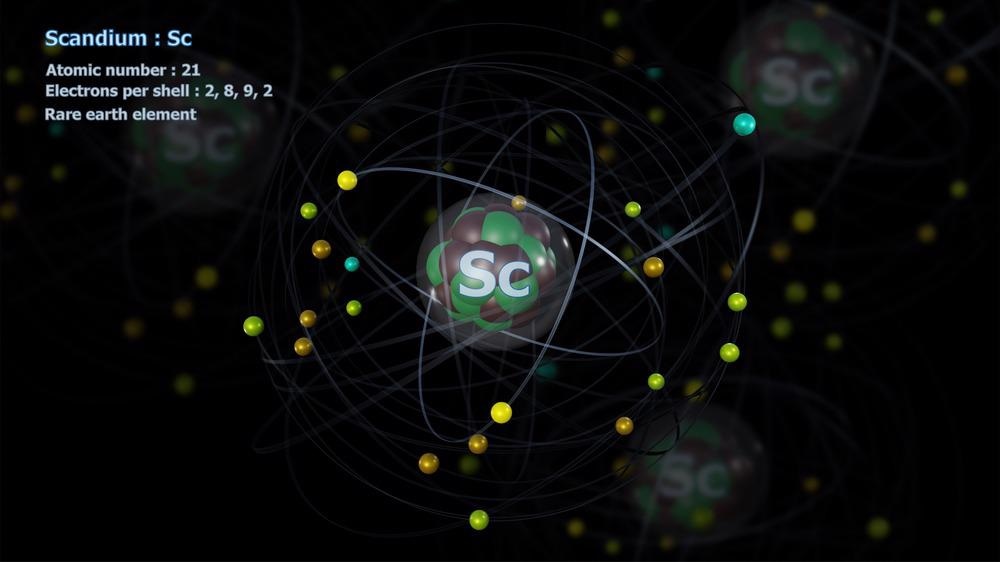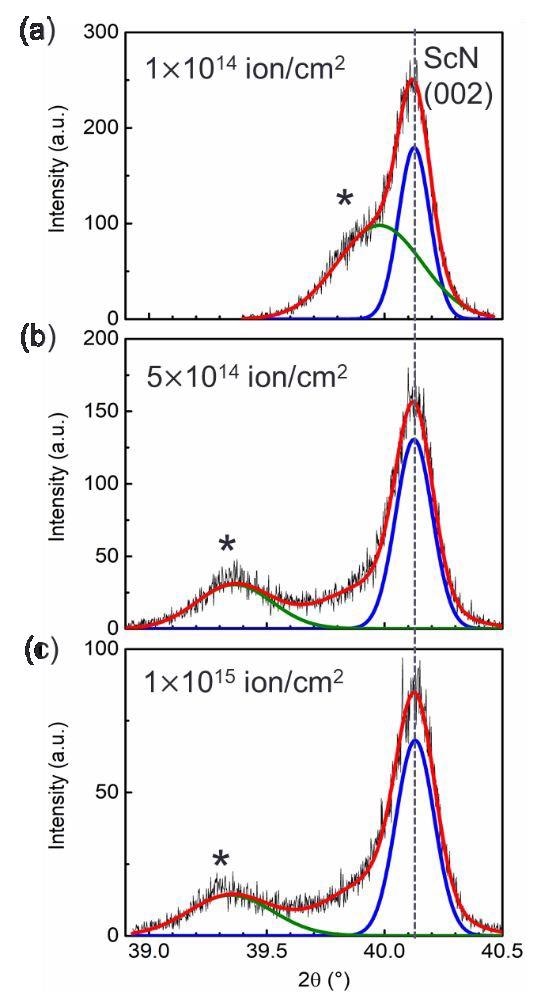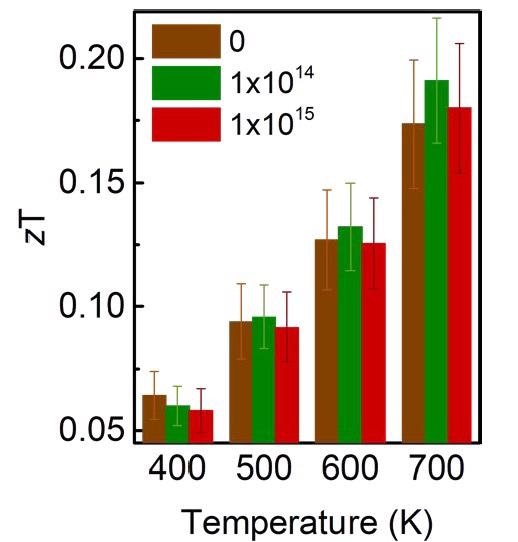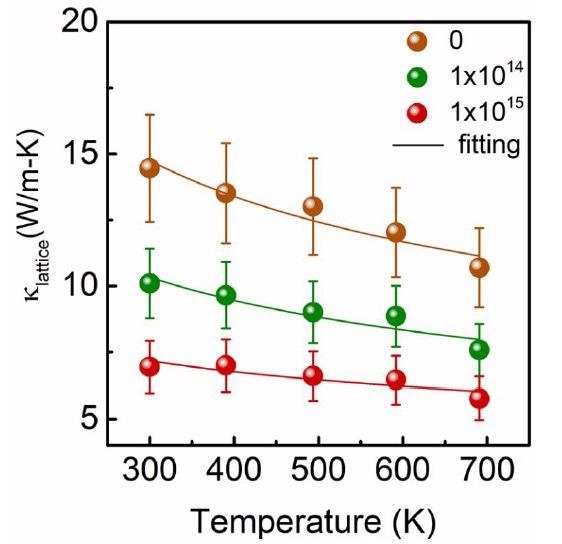 By Surbhi JainReviewed by Susha Cheriyedath, M.Sc.May 25 2022
By Surbhi JainReviewed by Susha Cheriyedath, M.Sc.May 25 2022In an article recently published in the journal ACS Applied Energy Materials, researchers discussed the utility of multifunctional irradiation-induced defects for improving thermoelectric characteristics of scandium nitride thin films.

Study: Multifunctional Irradiation-Induced Defects for Enhancing Thermoelectric Properties of Scandium Nitride Thin Films. Image Credit: Lionel Alvergnas/Shutterstock.com
Background
For more than two decades, traditional group-III nitride semiconductors, as well as their solid-solution alloys, have transformed modern optoelectronic and power-electronic device technologies. Wurtzite nitride semiconductors are intriguing for application in several sectors because of their adjustable and broad band-gap, high quantum yield for light emission, and high breakdown voltage.
However, group-III (A) nitride semiconductors are not well suited for some upcoming applications. Scandium nitride (ScN), a group-III (B) transition metal nitride (TMN), has many advantages over group-III (A) nitride semiconductors.
For ScN thermoelectric applications, techniques that minimize heat conductivity without changing the power factor will be beneficial. According to recent theoretical calculations, inserting native defects such as Sc and N vacancies into ScN should result in asymmetric peaks in the electronic densities of states near the Fermi level (DOS). However, integrating such native defects into ScN is difficult due to their thermodynamic instability and high formation energy. Irradiation-induced damage, on the other hand, can introduce point defects into thin films, as reported recently for a Bi2Te3 film with He-ion irradiation.

HRXRD peak convolution for irradiated ScN. The main ScN peak appears at 2θ= 40.12° and a shoulder peak arises due to the lattice expansion caused by the defects created by irradiation. Image Credit: Rao, D et al., ACS Applied Energy Materials
About the Study
In this study, the authors used lithium-ion irradiation to induce native defects in ScN thin films produced by molecular beam epitaxy (MBE) and investigated the impact of such native defects on ScN's thermoelectric properties. The versatility of irradiation-induced flaws in tailoring thermoelectric characteristics of transition metal nitride semiconductors was highlighted.
The team investigated the thermoelectric characteristics of MBE-deposited nominally single-crystalline ScN thin films. Plasma-assisted molecular beam epitaxy was used to deposit ScN thin films on MgO(001) substrates. The Li-atom penetration depth and irradiation-induced damages in ScN films were simulated by using the stopping and range of ions in matter tool. High-resolution X-ray diffraction (HRXRD) was used to investigate the structural changes caused by irradiation.
The researchers measured the thermoelectric properties such as electrical resistivity, Seebeck coefficient, and power factor as a function of temperature in the 400–1000 K range using the Linseis LSR-3. The transmittance and reflectance spectra were used to investigate variations in the optical band-gap. Finally, a time-domain thermo-reflectance approach was used to determine temperature-dependent thermal conductivity.

The thermoelectric figure of merit (zT) of irradiated ScN is slightly higher than pristine ScN at high temperature, but the change is within the error bars. Image Credit: Rao, D et al., ACS Applied Energy Materials
Observations
The Seebeck coefficient of irradiated ScN thin films increased considerably, as predicted by the theoretical models. At normal temperature, phonon scattering by irradiation-induced defects reduced thermal conductivity by more than half to 7 ± 1 W/(m.K). Despite having a lower electrical conductivity due to defect scattering, irradiated ScN thin films had a high- power factor of about (1−2) × 10−3 W/(m·K2) in the 300-950 K range and a minor increase in total zT.
The results revealed that irradiation-induced defects in ScN increased the Seebeck coefficient while they substantially lowered the thermal conductivity. A rise in the Seebeck coefficient, however, was followed by a fall in electrical conductivity. In the 300-950 K range, the thermoelectric power factor of the irradiated films remained strong. Furthermore, annealing the irradiation films restored structural and optical features and simultaneously maintained thermoelectric properties.
ScN's heat conduction was also reduced by 50% because of the phonon scattering from the irradiation-induced flaws. Irradiated films had a high-power factor in the 300-700 K temperature range, despite their lower electrical conductivity. Furthermore, when the irradiation films were annealed, the optical characteristics were restored while the electrical conductivity and Seebeck coefficient were maintained.

Temperature-dependent lattice contribution to the thermal conductivity (K lattice ) of the pristine and irradiated ScN films with two dosages are presented. Thermal conductivity data are fitted with the Umklapp scattering model. Image Credit: Rao, D et al., ACS Applied Energy Materials
Conclusions
In conclusion, this study discussed the utility of irradiation-induced flaws in the ScN thin films to enhance their Seebeck coefficient and decrease heat conductivity. HRXRD was utilized to examine point defects created by irradiating 35 keV Li ions on the MBE-deposited ScN thin films. ScN flaws caused the lattice to expand, resulting in a shoulder peak widening near the 002-diffraction peak.
ScN maintained its epitaxy and tight crystal structure despite an irradiation dose of 1 x 1015 ions/cm2, according to scanning transmission electron microscopy (STEM) imaging. At all temperatures, the projected formation of uneven densities of states which were close to the Fermi energy increased the Seebeck coefficient by greater than 12%.
The findings demonstrated the versatility of irradiation-induced flaws in maintaining and enhancing the thermoelectric properties of ScN, which may be applied to other material systems.
Disclaimer: The views expressed here are those of the author expressed in their private capacity and do not necessarily represent the views of AZoM.com Limited T/A AZoNetwork the owner and operator of this website. This disclaimer forms part of the Terms and conditions of use of this website.
Source:
Rao, D., Chowdhury, O., Pillai, A. I. K., et al. Multifunctional Irradiation-Induced Defects for Enhancing Thermoelectric Properties of Scandium Nitride Thin Films. ACS Applied Energy Materials (2022). https://pubs.acs.org/doi/10.1021/acsaem.2c00485